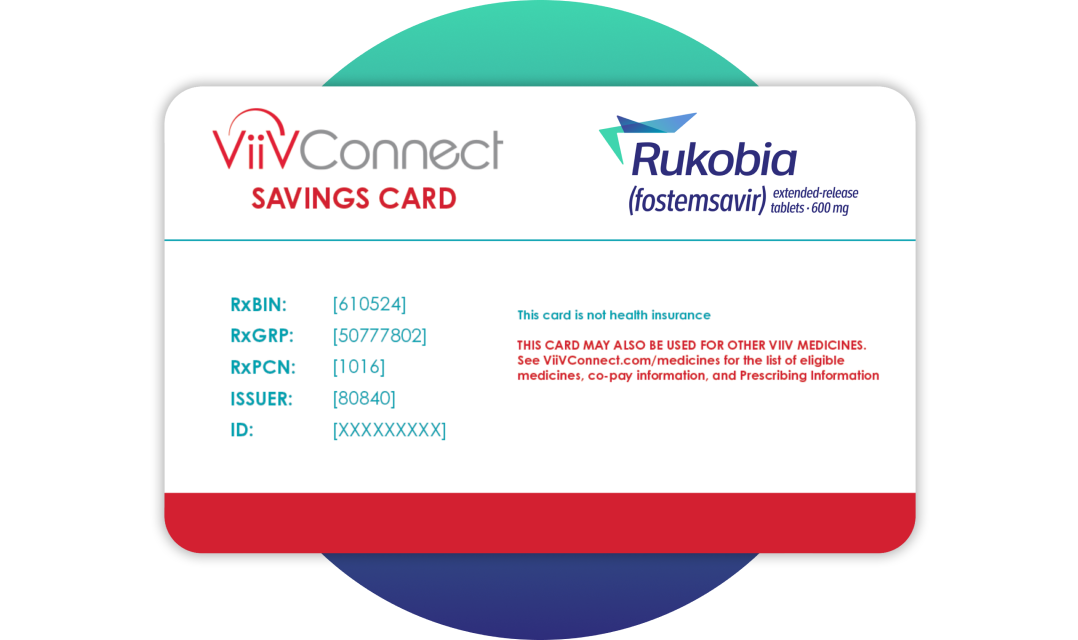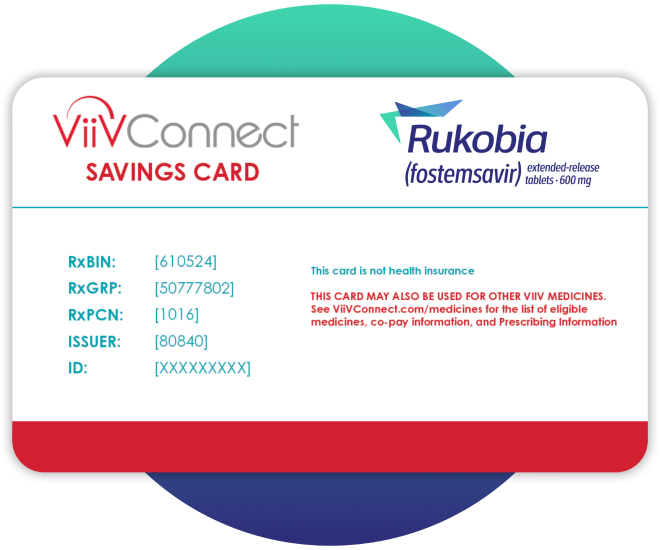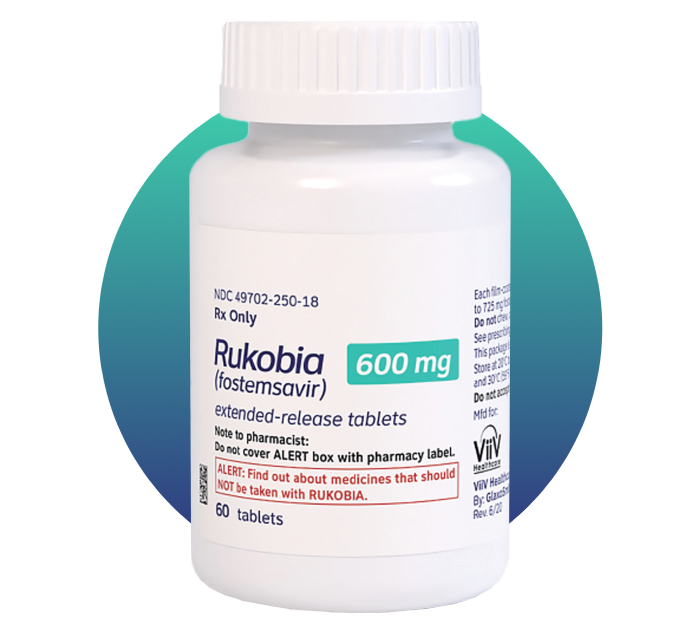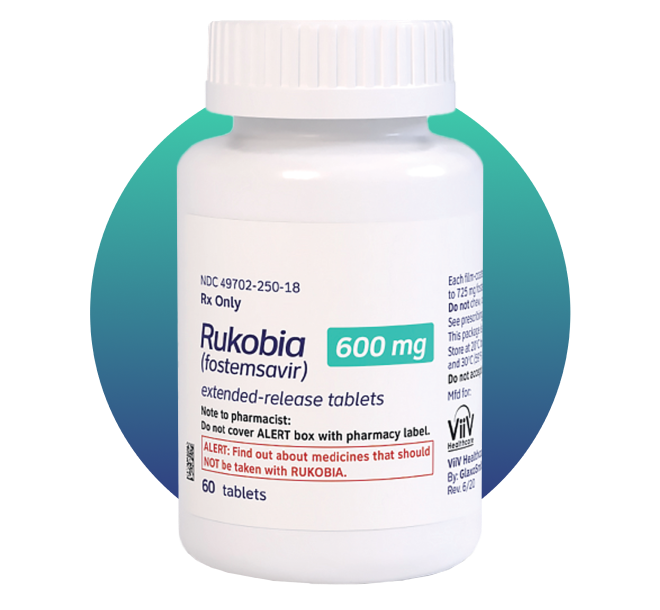*Prevents HIV-1 from interacting with host immune cells by binding gp120, leaving CD4+ T-cells untouched.
RUKOBIA, the only gp120 attachment inhibitor, was developed specifically for MDR HIV-1 and received breakthrough therapy designation from the FDA in 20151†
†The FDA’s Breakthrough Therapy designation is a process designed to expedite the development and review of drugs that are intended to treat a serious condition.
BRIGHTE trial design
BRIGHTE is an ongoing Phase 3, partially randomized, international trial in people living with MDR HIV-1 with confirmed HIV-1 RNA ≥400 copies/mL. The randomized cohort (double-blind, placebo-controlled through Day 8, then open-label) enrolled 272 participants who had 1 or 2 ARV classes remaining due to resistance, intolerability, or contraindications. The primary endpoint was the adjusted mean decline in HIV-1 RNA at Day 8: 0.79 log10 copies/mL (RUKOBIA 600-mg BID + failing regimen, n=201) vs 0.17 log10 copies/mL (placebo + failing regimen, n=69); difference: -0.625 (95% CI: -0.810, -0.441); P<0.0001. At Week 240, 45% of participants in the Snapshot Analysis (ITT–E, HIV-1 RNA <40 copies/mL) were virologically suppressed vs 53% at Week 24 (results are descriptive). The mean increase in CD4+ T-cell counts from baseline to Week 240 was 296 cells/mm3 (observed analysis). The observed analysis included only participants for whom CD4+ lab values were measured at each study visit, potentially favoring patients who benefited from treatment.2,3,5
‡Subject to eligibility and program terms and conditions; ViiVConnect programs do not constitute health insurance.
§Subject to patient and prescription eligibility. Up to $7500 per year with no monthly limit for RUKOBIA. Total savings across eligible ViiV Healthcare medicines not to exceed $7500 per year. Restrictions apply.
ARV=antiretroviral; AE=adverse event; BID=twice daily; CI=confidence interval; FDA=US Food and Drug Administration; gp120=glycoprotein 120; HIV-1=human immunodeficiency virus type-1; IRIS=immune reconstitution inflammatory syndrome; ITT–E=intent-to-treat–exposed; MDR=multidrug-resistant; MOA=mechanism of action; RNA=ribonucleic acid.
References:
- Center for Drug Evaluation and Research. RUKOBIA new drug application. June 22, 2020. Accessed December 12, 2023. https://www.accessdata.fda.gov/drugsatfda_docs/nda/2020/212950Orig1s000RiskR.pdf
- Aberg JA, Shepherd B, Wang M, et al. Week 240 efficacy and safety of fostemsavir plus optimized background therapy in heavily treatment-experienced adults with HIV-1. Infect Dis Ther. 2023;12(9):2321-2335. doi:10.1007/s40121-023-00870-6
- Lataillade M, Lalezari JP, Kozal M, et al. Safety and efficacy of the HIV-1 attachment inhibitor prodrug fostemsavir in heavily treatment-experienced individuals: week 96 results of the phase 3 BRIGHTE study. Lancet HIV. 2020;7(11):740-751.
- Gartland M, Zhou N, Stewart E, et al. Susceptibility of global HIV-1 clinical isolates to fostemsavir using the PhenoSense® Entry assay. J Antimicrob Chemother. 2021;76(3):648-652.
- Kozal M, Aberg J, Pialoux G, et al. Fostemsavir in adults with multidrug-resistant HIV-1 infection. N Engl J Med. 2020;382(13):1232-1243. doi:10.1056/NEJMoa1902493
- Data on file, ViiV Healthcare.
FSTWCNT230022








